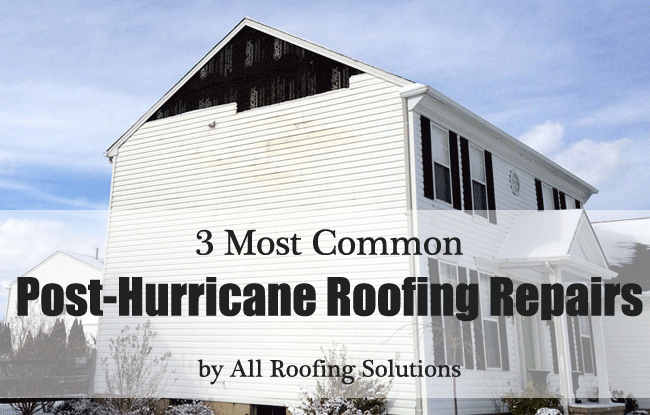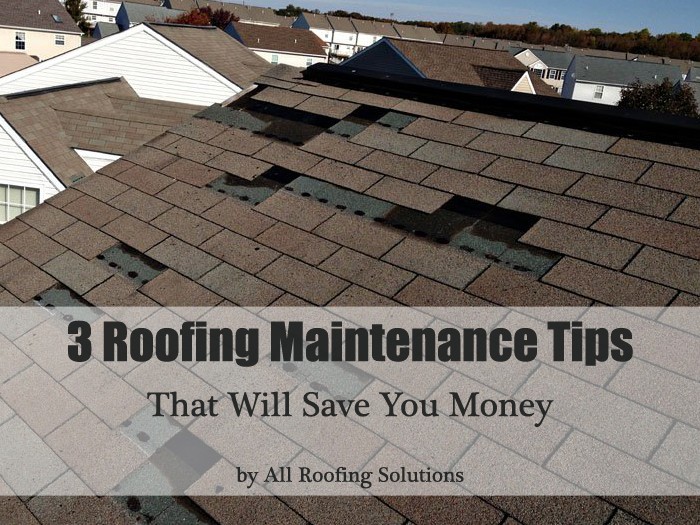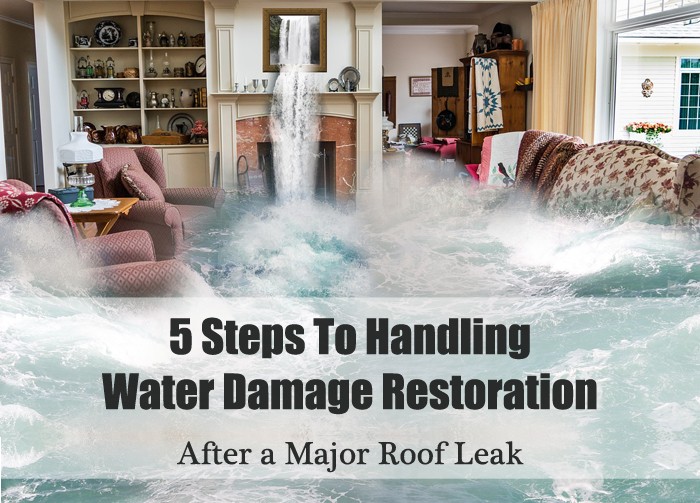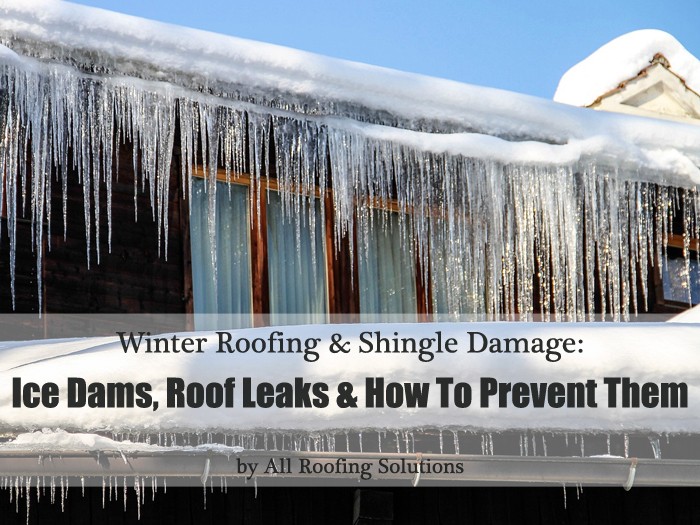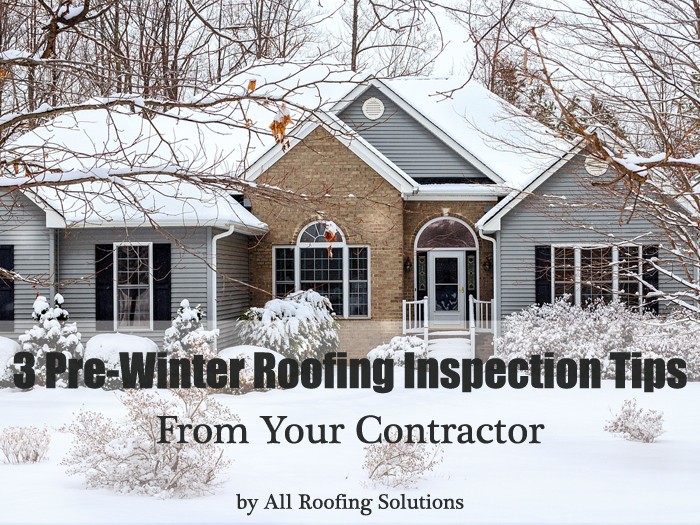
With the hurricane season fast approaching, we’d like to talk about the 3 most common roofing repairs we tend to run into after any substantial storm. From roof leaks and high wind damage to fallen trees and ripped off siding, the aftermath can be quite serious.
Storms are dangerous and destructive. After a storm passes, a thorough inspection by a professional is critical – not all roofing problems are obvious, and the absence of leaks doesn’t necessarily mean your roof is fine. Make sure to check for roof damage from wind, hail or fallen branches, document any problems, and work with your insurance company and an experienced contractor to fix any issues.
3 Most Common Post-Hurricane Roofing Repairs
Here are 3 basic things to look for when checking your roof for any potential damage.
Missing, damaged, or loose shingles
High winds in general, and particularly high sustained wind typical for hurricanes, can be very difficult on your roof. If your asphalt shingles have been blown off or damaged by flying debris, your home is far more vulnerable to roof leaks and associated problems.
Your roofer should examine each section of your roofing deck checking for missing shingles or missing pieces of metal fascia, including any chimney flashing pieces. They should also evaluate the condition of exhaust pipes, valleys, outer edges or angles where the roof meets the walls. And if there was any hail involved, check your roofing and siding for hail damage as well.
Preventative Tip: Preventative inspection prior to the hurricane season can also uncover small issues before they turn into larger problems once your home is hit with high winds – inspect your structure as part of your fall maintenance routine and to avoid potential issues later!
Roof leaks
Hurricane’s hard, driving rain may exploit existing cracks or problem areas on your roof. It is critical to inspect your attic for leaks or water damage after the storm passes. Look for stains on ceiling or walls. Any water getting inside the house will damage the internal structure and can become a source of serious structural damage. Again, many leaks are hard to spot – the roofer your enlist should be experience in repairs or they might miss potential problems.
If there are leaks, the most important step you can take to prevent any further damage to your roof and house is to control the spread of the water seeping in. Likewise, any puddles of water or stagnant water forming on the roof should be removed as soon as it’s safe to do so. If left unattended, this can be a major cause of roof leaks down the road.
Preventative Tip: Again, a routine inspection every fall should be on your agenda, if you want to avoid costly repairs – especially if you own an older home or if your home is located in the path of the typical storm.
Clogged gutters and downspouts
Hurricanes stir up a lot of debris. Swirling twigs, branches, leaves, and building materials may not only damage your shingles, they may also clog your gutters, too. And, if debris remains on your roof, upcoming snow and rain is likely to wash it into your rain gutters. Malfunctioning downspouts pose hazards not only to your roof, but also to your basement, as rainwater accumulation can result in flooding.
You’ll want to be sure your roof, gutters and downspouts are clear before water or ice backs up and causes damage. Remember, stay safe, and be sure to handle roof & gutter cleaning after the storm is completely out of your area, or hire professional help.
Preventative Tip: Gutters clogging with leaves and debris is a common problem that can be prevented by installing gutter guards.
We’re Here To Help!
When your home is bombarded by heavy rains, storm, strong winds or hail, prompt emergency repairs are often necessary. If you suspect your roof has been damaged or otherwise deteriorated, the best advice we can give you is to seek out the expertise and advice of an experienced, local roofing contractor. And All Roofing Solutions is ready to help!
We’re a family-owned business with 20 years of experience and offer affordable, expert roof repair, replacement and installation services to customers throughout Delaware and southeastern Pennsylvania.
Contact us today at 302-725-ROOF (7663) in Delaware or 610-551-ROOF (7663) in Pennsylvania for your FREE estimate. And if you mention this post, you’ll receive a discount of 15% off any roofing repair job.
